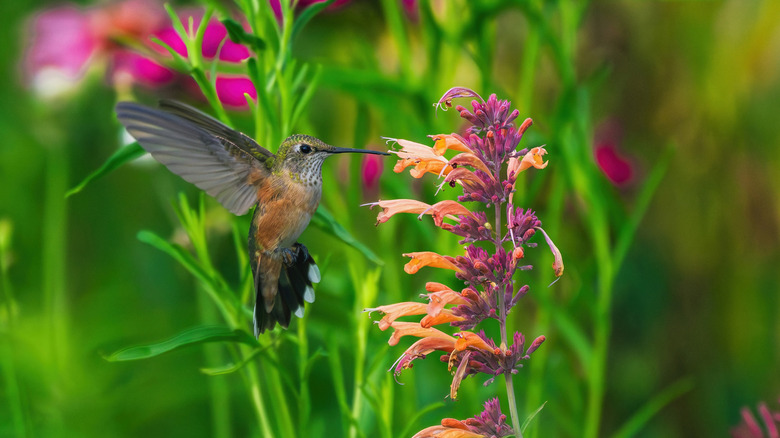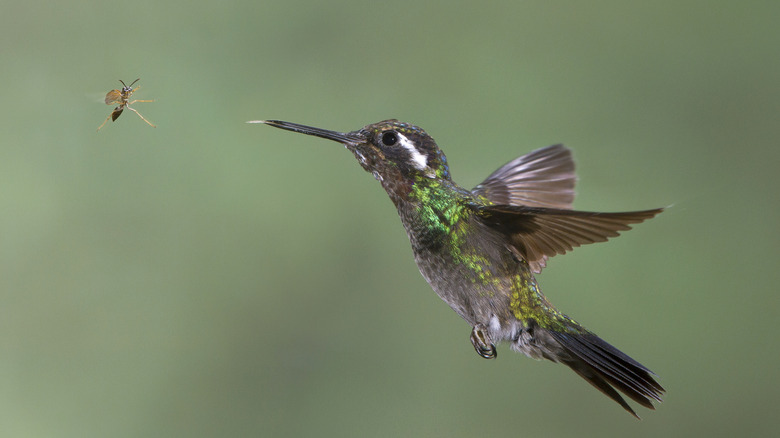How To Start A Hummingbird Garden (& Why You'll Want To)
You can start a garden if you want to make use of your green thumb, and there are so many options available: herb garden, flower garden, vegetable garden, annuals, perennials, and more. While growing and maintaining a garden can take a lot of time and energy, one that is well worth the effort is a hummingbird garden. It's specifically made to attract more of these small birds to your yard. While they may come naturally, putting in some conscious effort to entice them will get better results. Once they start coming by regularly, you can enjoy watching them day in and day out as they flutter around and dart from spot to spot.
Not only are they a fun sight, but hummingbirds are pollinators and they can benefit the plants and flowers around your home, making your entire yard more vibrant and significantly improving growth. They can also help get rid of insects. Starting a hummingbird garden is pretty straightforward: add plants and flowers that attract hummingbirds. Prioritize plants that are native to your area, as these are more likely to bring in pollinators. Depending on your region, examples of native plants for hummingbirds could include bee balm, lupines, wild columbines, and others.
Single-bloom, long, and tubular flowers are ideal for a hummingbird's long beak, so consider growing trumpet vine, butter bush, petunia, daylilies, or foxgloves. Add options that bloom at a variety of times during the year, so that there's always something for hummingbirds to pay attention to. Believe it or not, color is also important to keep in mind. Hummingbirds like red flowers, although they may also enjoy yellow, green, purple, and blue flowers.
Other things to keep in mind when attracting hummingbirds
If you want to do the best job of attracting hummingbirds to your yard, consider adding some nesting materials for them to use. They prefer organic material such as fluff from milkweed, dandelion, and cattails. It can also be useful to ensure they have plenty of perching spots available. Adding shrubs and trees can help give them spots to rest for a moment when needed. Alternatively, you could add some DIY perches and hummingbird swings to the garden for the same purpose.
To make the most of your hummingbird garden, be sure to keep all of its flowers and plants healthy. Do any deadheading and pruning that's necessary based on the needs of each particular plant. This can increase flower growth and make hummingbirds happy. Avoid using pesticides in your hummingbird garden, since they can potentially harm their tiny bird bodies. Hummingbirds eat a lot of insects, so just leave it to them. They'll be happy to eat the unwanted bugs for protein as long as they're around. In fact, you might even want to lure insects to attract hummingbirds to your yard with a little-known fruit hack.
In addition to maintaining the growth of your plants and flowers, consider adding water features to give them spots to drink and bathe. You could buy or make a special feeder (just be sure that you're hanging the hummingbird feeder at the right height) and place it in your hummingbird garden to further improve your chances of building a thriving oasis.

